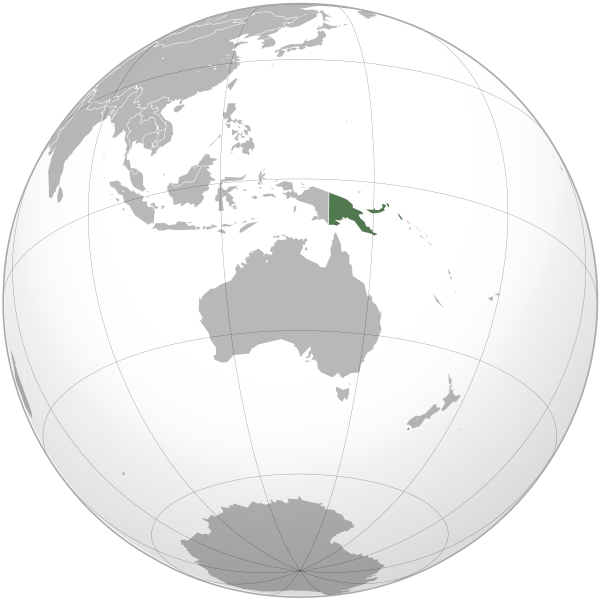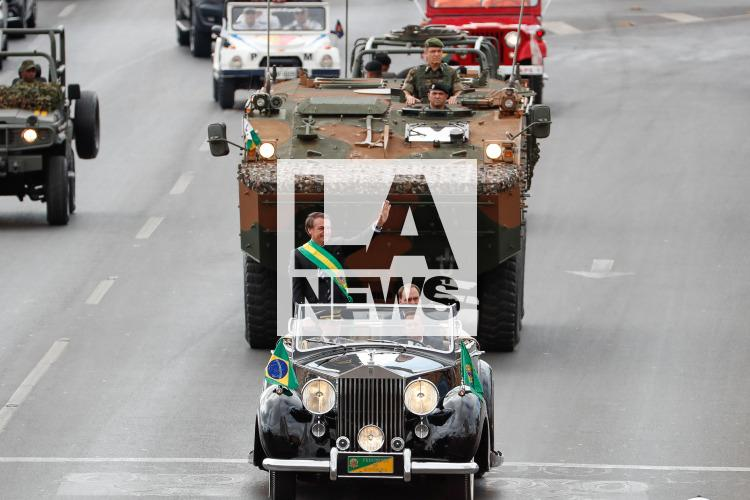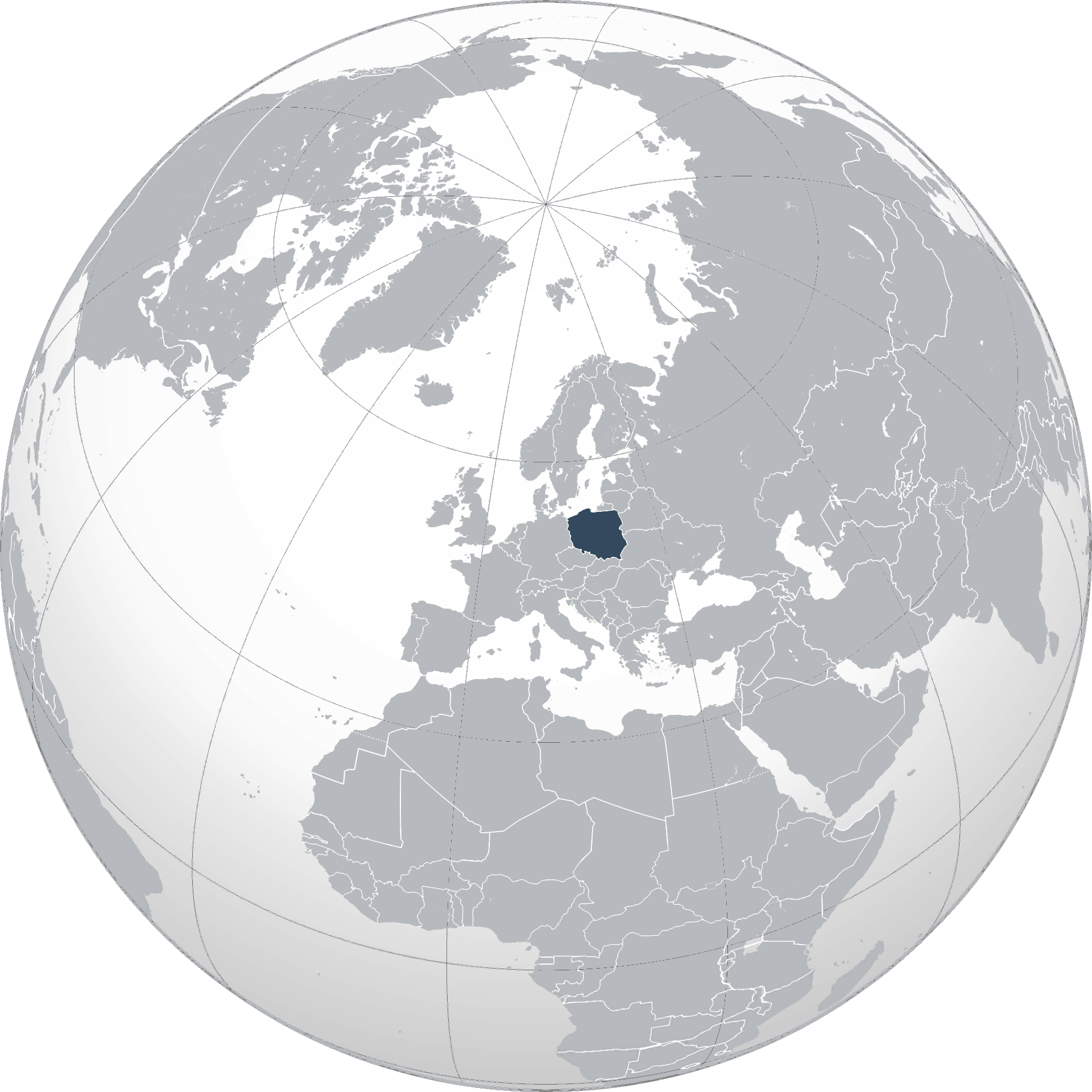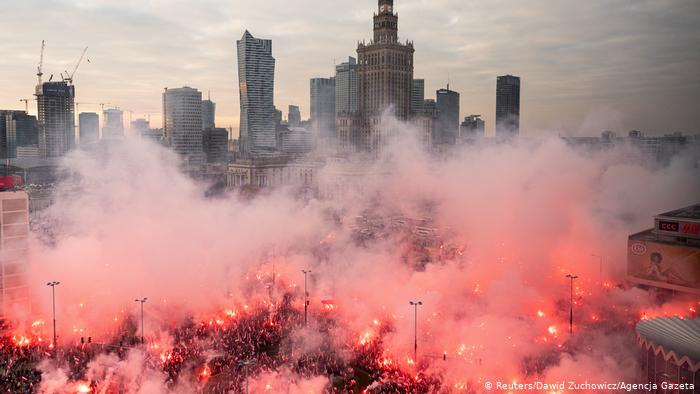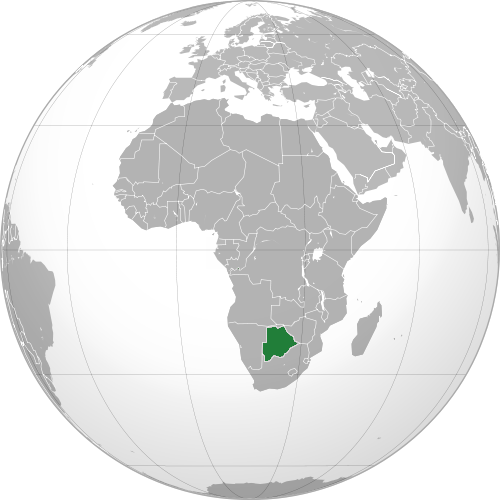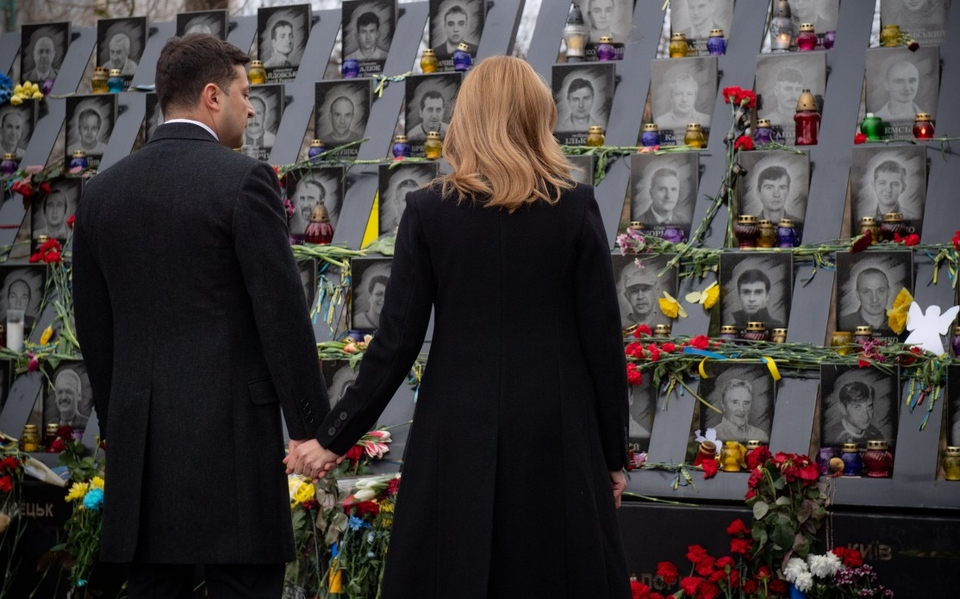“Merdeka! Merdeka! Merdeka!”
The echoes of our forefathers, who were vocally opposed to the treacherous prospects of a Malayan Union. The 31st of August serves as a reminder that we are no longer subjects of the British. To this day (certainly before 2020), Malaysians gather in places such as the Putra Square and their respective living rooms to commemorate national sovereignty.
In light of the Covid-19 pandemic however, large-scale events were cancelled en-masse. Independence Day celebrations weren’t spared from the chopping block either. Though, all is not lost. Reading can make up the loss of outside participation opportunities. In these trying times, I’m going to offer fellow readers a simple yet comprehensive introduction (plus a prompt history lesson, and some facts) into ‘Patriotic Festivities’ of the past.
Fact #1: All countries that observe Independence/National Day celebrations have parades.
1. Papua New Guinea
Papua New Guinea, a nation located in the continent of Oceania. Bordering the country is West Papua, a province of Indonesia. Its eastern neighbour however remains part of Asia as the parent country resides in geographic Asia. It declared independence from Australia on the 16th of September 1975. On the same day 12 years earlier, the Federation of Malaysia was formed.
Fact #2: The Papua New Guinean flag was designed by a 15 year old female student by the name of Susan Karike Huhume, which included the colours commonly found in local art and clothing.
History
In 1906, Australia inherited the governance in the southern part of Eastern Guinea from the British. Following the Axis defeat in World War I, the League of Nations gave Australia the formal mandate to administer German-held New Guinea (Kaiser Wilhelm Land pictured above). Post-Second World War (1945), it was renamed Territory of Papua and New Guinea. 12 years prior to independence, the territory formed its first legislative assembly. The notion of becoming a sovereign state was underway. On the 16th of September 1975, independence was declared in the city of Port Moresby and the name Papua New Guinea was officially adopted.
Young and old from all fringes of society gather in Port Moresby, 2019
September 16 – Dazzled in red, black and gold, Papua New Guineans across the country celebrate the 44th year of independence in the capital city of Port Moresby. Despite having over 700 different tribes, citizens of Papua New Guinea (PNG) came together in unity to commemorate another year of national sovereignty.
On this day, the much anticipated flag parade by the students and PNG Defence Force would not commence until the very last of speeches from top officials. Droves of people draped in traditional clothing called bilasor in colours of the country’s flag are a common sighting among the crowds.
Celebrations of independence occur throughout the month. Fellow Papua New Guineans immerse themselves in various activities during Independence Weekend as reported here, such as coconut breaking and racing competitions. Certainly, other cultural events such as the Goroka Show (tribal gathering event pictured above) and the Kokopo Fashion Week attracts large crowds, both locals and tourists alike. Of course, it wouldn’t be a patriotic month without traditional dances performed by volunteers and students. The fact that the nation is able to represent their large pool of communities in one event is absolutely stunning.
2. Brazil
Brazil is a country located in South America. The country is well-known for its carnival festivals and partying. A former colony of the Portuguese, Brazil officially gained independence on the 7th of September, 1822. The words Ordem E Progresso on the flag is Spanish for Order and Progress, a motto of Positivism by French philosopher Auguste Comte. Fact #3: Historians couldn’t figure out the real origins of Brazil’s name, but theorised that it derived from a tree known as brazilwood. During the colonial era of the Portuguese, brazilwood was in abundance which fuelled commercial trade. Frequent use of the term “Brasil” to associate the colony was officiated by the King of Portugal.
History
Prior to independence, it was rather uneventful for the Portuguese colony in South America. After gaining self-rule, Brazil underwent a tumultuous 67 years as an empire. It wasn’t until a military coup in 1889 which successfully overthrew King Pedro II did Brazil finally become a Republic. Modern Brazil recognises 7th of September 1822 as the official Independence Day despite the Empire’s rule before the formation of the Republic.
The bustling city of Brasília packed to the brim as the presidential address is broadcasted, 2019
Brasília is where the occasion is held. Not Rio de Janeiro, that’s the former capital of the country. National day is commonly known as Sete de Setembro, literally 7th of September in Portuguese or Dia da independência do Brasil (Independence Day of Brazil)by locals. On the 197th year of Independence, Brazilian President Jair Bolsonaro is seen on a ceremonial state car waving to his fellow countrymen during the military parade around the Esplanade of Ministries. A day where once descendants of slaves, European migrants and indigenous Indians gather, foregoing their past and forging a new partnership. Enthusiastic people see their country come alive.

3. United States of America
A global superpower positioned in North America, the United States of America is recognised as the leader of the free world. It wasn’t always the case in its first century of existence, however. The union comprises 50 states and various territories coming together to present their own individual celebrations on the 4th of July.
Fact #4: To the North, the Americas were once British territories. To the south, the Americas were once Spanish, Portuguese or French colonies, and the language then spoke derived from Latin, hence adopting the collective term “Latin America”.
History
North American independence was achieved through war with the British Empire. American colonists were dissatisfied with the taxes raised by British officials in order to pay off war expenses incurred during a conflict with France. The fight for independence lasted seven years, beyond the declaration of Independence on the 4th of July 1776 to formally end British hostilities. Prospects of a civil war loomed over the new-born nation for the next century, challenging the true meaning of independence for America.
Patriots swarm the Capitol for the 4th of July Celebration, 2019
July 4 – A National Independence Parade kicked off at 11.45 am, lasting for around 2 hours. Americans of all races, donned white sleeves and held the Star-Spangled Banner with pride. Balloons of all sorts were visible across the parade, showcasing the vibrant colours of the nation. The parade also had its own Fife and Drum Corps, an infantry musical unit, to coordinate the parade as it marched along the streets.
On the same evening, the Trump administration hosted the “Salute to America” event, drawing people from both sides of the political divide. People flocked the National Mall ahead of the event, despite the gloomy skies. Intermittent raining did however occur, but crowds stood resiliently against unfavourable weather as the President made his speech in praise of soldiers who serve in the military and the heroes that make America who she is today.
Highlights of the event included a fly-by of military jets and the signature AirForceOne over the Lincoln Memorial, where the speech was given. Of course, 4th of July celebrations in Washington D.C. ended with a bang!
4. Poland
Split into colonies of multiple empires and even griped with communism in the past, Poland emerged from the tainted past a strong and nationalistic country. The country has no official religion, but her populace are mainly Catholics.
Fact #5: Controversy: Poland’s celebration of National Day is hosted on political and ideological grounds, unlike the mostly non-partisan and government-held ones that catch the limelight in other countries.
History
Poland was an idea of how a sovereign nation of Polish people would seem like back in the days. Having only existed as three distinct partitions of colonies for 123 years, it had never experienced the taste of nationhood. In order to form a nation, these colonial powers must fall. By the end of World War I (1918), Poland hopped onto an opportunity to gain independence from the crippled Austro-Hungarian Empire. Alas, free from the shackles of imperial colonists! However, the outbreak of the Second World War shortened Poland’s independence, as it fell to the Nazis until their defeat, then the USSR until its collapse in 1991.
Streets of Warsaw congested with people, 2019
The 101years since the formation of a new republic. November 11th is regarded as Remembrance or Poppy’s Day across the world, marking the end of a devastating World War. Yet, to many Polish people, it is a day of Independence. A day that the Polish people sought to rule over themselves. Today, Poland celebrates the occasion not with a blend of all races in Polish society, but with a divide in the political spectrum. In the absence of a government-hosted celebration, growing right-wing sentiment takes its place, thus linking National Day with the conservative ideology in Poland. This inevitably ruffled feathers of the Polish Government. Nonetheless, the celebrations were like any other, with people of all ages attending, holding up Polish red and white flags, which from above created an illusion of a red sea.
From above the skies, attendees of National Day let off red flares, which represented the colours of the Polish flag. Certainly, there were Independence Run events hosted in Warsaw, with runners lining up in two distinct rows to form the Polish flag back in 2016.
5. Botswana
Botswana, a developing third-world country located in the Southern part of Africa. Although both South Africa and Botswana were once part of the British Empire, Botswana was merely a protectorate. However, this meant that it escaped the horrible apartheid issue that plagued South Africa until the 1990s.
Fact #6: Botswana is ranked amongst the least corrupt countries in Africa, and boasts a thriving economy that enjoys a high economic growth rate. (4.48% in 2018)
History
Before achieving self-rule, Botswana was known as the British Protectorate of Bechuanaland. Since the late 19th century, the British did not desire to invest resources towards the protectorate, as it planned to instead hand it over to South Africa. From the late 1950s onward, the distinct nature of Bechuanaland proved that it should not merely be merged into South Africa. Hence, political activity in the protectorate thrived under then (first) President of Botswana Seretse Khama. By 1965, the administrative capital of Gaborone was built and Bechuanaland attained self-governance. A year later, on the 30th of September, Botswana was declared a Republic.
Citizens across the country gather in Gaborone to Celebrate Boipuso, 2019
September 30 – 53 years and counting, Botswanans (or Batswana) fill the National Stadium stands in the three colours of Botswana’s flag. People on the stands cheer on as President Masisi is escorted in a jeep led by a battalion of cavalry. It marked the beginning of National Day celebrations, fondly known as Boipuso by the locals.
Marching parades proceed to form drill formations. As the marching parade goes into formation, the Botswana Defence Force (BDF) conducts helicopter and jet flyovers above the stadium. As the marching ends, the Botswana Ensemble takes over the celebrations to display the wonders of music and dances that come with it.

This sums out the activities for the day. As night falls, Botswanans were treated to a cultural night that took place at the University of Botswana, featuring the acts, performance and arts that won prizes during the President Day celebrations (another completely different occasion).
6. Ukraine
Ukraine, a former Soviet Satellite state sits right between the corridors of influence, where to the east it has Russia, and the west are members of the European Union.

Facts #7: Ukraine is home to the geographical centre of Europe. It might not seem like it, but the small town of Rakhiv in western Ukraine claims the title.
History
Ukraine had never been formally declared independent until the fall of the Soviet Union in 1991. In 20th century, Ukraine suffered mismanagement and were politically suppressed by both the Russian Empire, the Nazi Regime and the USSR during different periods of occupation. Under Mikhail Gorbachev’s leadership and his policies of Glasnost (Transparency) and Perestroika (Restructuring), Soviet Republics like Ukraine experienced a surge in nationalism. Eventually, demands for an independent state overwhelmed the communist leadership. As of 24th of August 1991, Ukraine declared independence from the USSR, four months before the fall of the Soviet Union.
Celebrations in Kyiv mark the 28th year of democracy as Ukrainian subjects cheer on, 2019
August 24 – President Zelensky and First Lady Zelenska started off celebrations by paying respects at the memorial Cross of the Heavenly Hundred Heroes, to remember those who sacrificed their lives fighting for Ukraine. Followed by a nation-wide minute of silence whilst the church bell rang for a hundred times. The nearby neighbourhood Rusanivka Beach hosts the Vyshyvanka Run, a sporting event that occurs on National Day.
Participants were given embroidered shirts which are called vyshyvanka, hence the name of the run.
President Zelensky had announced the cancellation of military parades for this year’s Independence Day celebrations as the country continues its fight against secessionist movements in East Ukraine allegedly supported by Russian forces. This did not dampen the spirits of the people, and instead encouraged a compromise of active soldiers, veterans and volunteers who organised their very own unofficial march. As such, citizens of Kyiv were able to watch the traditions which was a sea of blue and yellow on the streets, the greatest show of patriotism by fellow Ukrainina citizens. Various performances by local bands and singers commenced after the march.
And that’s a wrap! Celebrations do vary from country to country. They are similar, yet unique in their own ways. Location of celebrations, for example, dictates what events or activities can be carried out. Some countries take their national day a step further by orchestrating a monumental display of fireworks at night. Others take a less striking approach, opting to keep celebrations traditional and simple.
We might be stuck at home, unable to observe the grand festive activities as the fight against Covid-19 rages on. However, this doesn’t mean we’re completely restricted from taking part in the various patriotic events. Heck, the age of technology grants us the ability to watch events happening in the comfort of our own homes. At the moment, we can look forward to our first ever virtual Merdeka Day, if that ever gets implemented by the government. For now, we can just hope.
By Wei Choong


